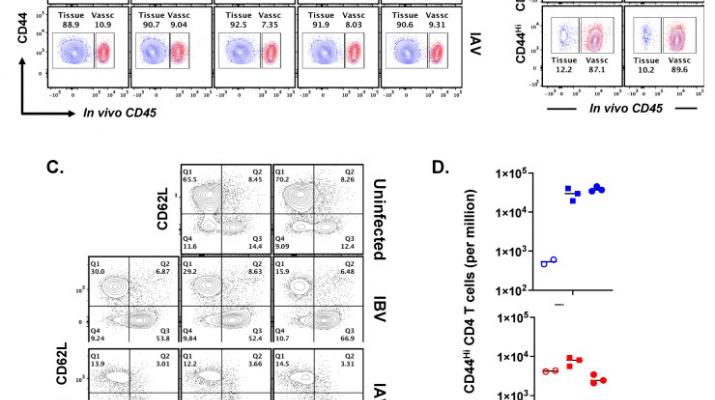
Abstract
The adaptive T cell response to influenza B virus is understudied, relative to influenza A virus, for which there has been considerable attention and progress for many decades. Here, we have developed and utilized the C57BL/6 mouse model of intranasal infection with influenza B (B/Brisbane/60/2008) virus and, using an iterative peptide discovery strategy, have identified a series of robustly elicited individual CD4 T cell peptide specificities. The CD4 T cell repertoire encompassed at least eleven major epitopes distributed across hemagglutinin, nucleoprotein, neuraminidase, and non-structural protein 1 and are readily detected in the draining lymph node, spleen, and lung. Within the lung, the CD4 T cells are localized to both lung vasculature and tissue but are highly enriched in the lung tissue after infection. When studied by flow cytometry and MHC class II: peptide tetramers, CD4 T cells express prototypical markers of tissue residency including CD69, CD103, and high surface levels of CD11a. Collectively, our studies will enable more sophisticated analyses of influenza B virus infection, where the fate and function of the influenza B-specific CD4 T cells elicited by infection and vaccination can be studied as well as the impact of anti-viral reagents and candidate vaccines on the abundance, functionality, and localization of the elicited CD4 T cells.